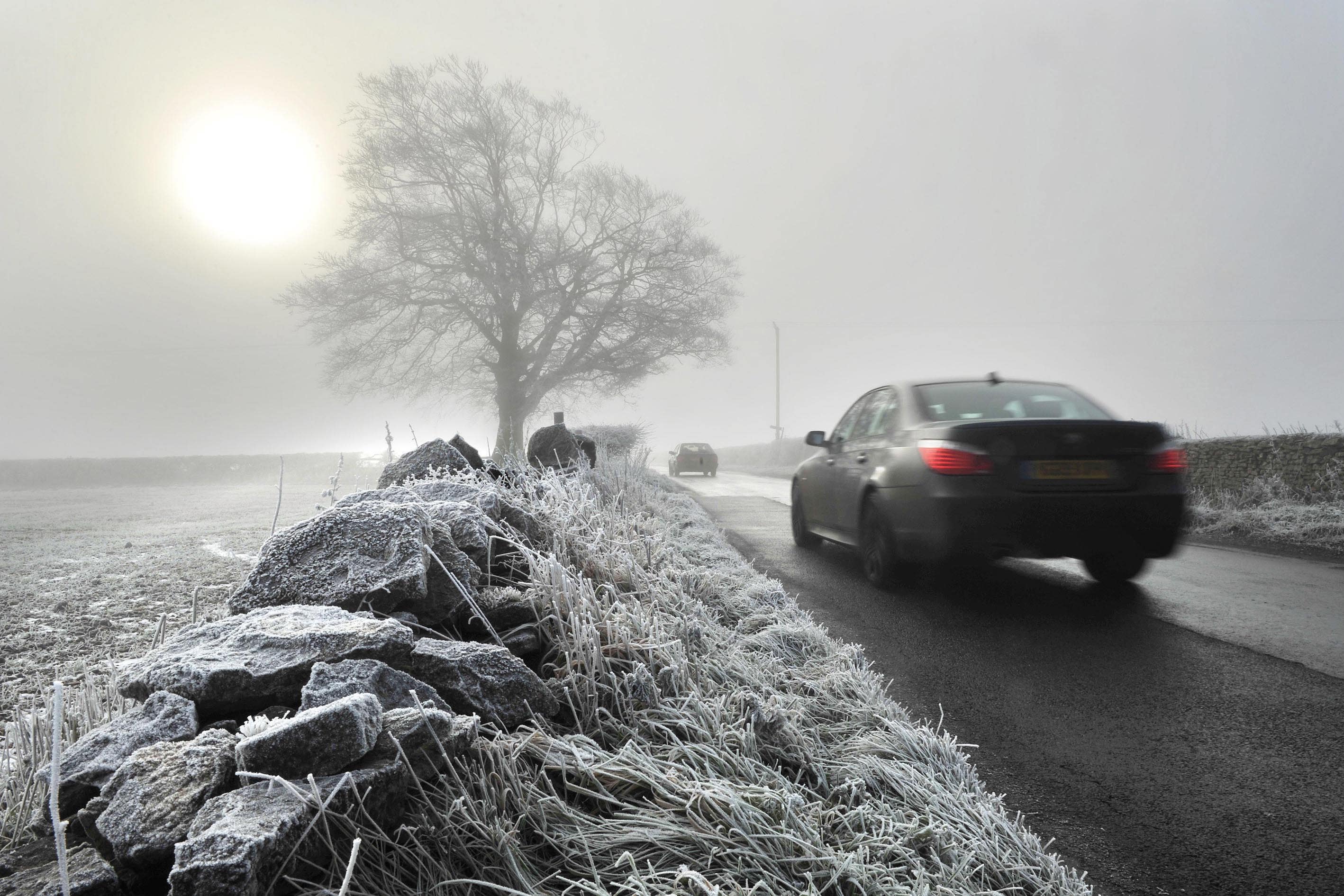How to drive safely in cold weather
Plunging temperatures can bring more difficult driving conditions.

Your support helps us to tell the story
From reproductive rights to climate change to Big Tech, The Independent is on the ground when the story is developing. Whether it's investigating the financials of Elon Musk's pro-Trump PAC or producing our latest documentary, 'The A Word', which shines a light on the American women fighting for reproductive rights, we know how important it is to parse out the facts from the messaging.
At such a critical moment in US history, we need reporters on the ground. Your donation allows us to keep sending journalists to speak to both sides of the story.
The Independent is trusted by Americans across the entire political spectrum. And unlike many other quality news outlets, we choose not to lock Americans out of our reporting and analysis with paywalls. We believe quality journalism should be available to everyone, paid for by those who can afford it.
Your support makes all the difference.The UK is expected to be plunged into chilly temperatures next week, with weather warnings already issued for large parts of the country.
Cold weather will bring a greater chance of ice and snow on the roads, making driving conditions more difficult as a result.
So how can you make sure you are as safe as possible when out on the roads in these conditions?
We’ve got some tips.
– Make sure your car is thoroughly defrosted
Sub-zero temperatures will cause your car to freeze over and you need to make sure any ice is thoroughly cleared away before setting off on your journey. You can use a tried-and-tested ice scraper to remove it from the windscreen and windows, or there are some ‘spray’ products which make quick work of it instead.
If there is any snow on your vehicle, that needs to be completely removed too. Snow left on a car’s roof can go hard and fly off when on the move, potentially causing an issue for motorists behind.
– Do not leave your vehicle unattended to warm up
Though it might be tempting to start your car’s engine and head back inside while the car defrosts, it should be avoided. You should always stay with your vehicle while it is in operation.
Leaving your car running on its own leaves you open to potential theft and some insurers might not pay out if they find out you left the car running while unattended.
– Take your time
When it comes to icy conditions, it pays to take your time. Giving yourself a little extra breathing space leaves you better equipped to deal with issues like a slide or a blockage in the road.
So slow down and give yourself plenty of time to make your journey.
– Leave extra space
Ice and snow seriously hamper a car’s ability to slow down effectively so you should definitely be leaving more space between yourself and the vehicle in front. It gives you more time to brake should the car ahead of you start to slow down.
Giving extra space also means traffic can move more continuously.
– Stick to major roads
Gritters will work across the country to ensure roads are kept as safe as possible, but many are not able to access minor roads or some country lanes. Because of this, you are safest on dual carriageways and other major roads – if there’s the option – as these are more likely to be gritted entirely.
So if you do need to travel, try and stick to these major roads.
– Do not brake on ice
Ice brings a whole different aspect to driving. Particularly in the UK, ‘black’ ice can prove to be quite the problem and can cause a car to slide or skid unexpectedly. If you notice your car begin to slide, do not be tempted to apply the brakes as this can exaggerate the problem. Try to keep your steering straight too because if you turn it and the car regains traction, it could shoot you off in another direction.
Try to maintain your speed and, essentially, do not make any sudden movements that could unsettle the car and cause you to crash.
– If there is any doubt, stay at home
One of the easiest ways to stay safe is to avoid travel if you think the conditions make driving too dangerous. If there is snow or ice about, then think about whether you actually need to travel and make a decision based on that.
It is also a lot less stressful than trying to battle through poor conditions.